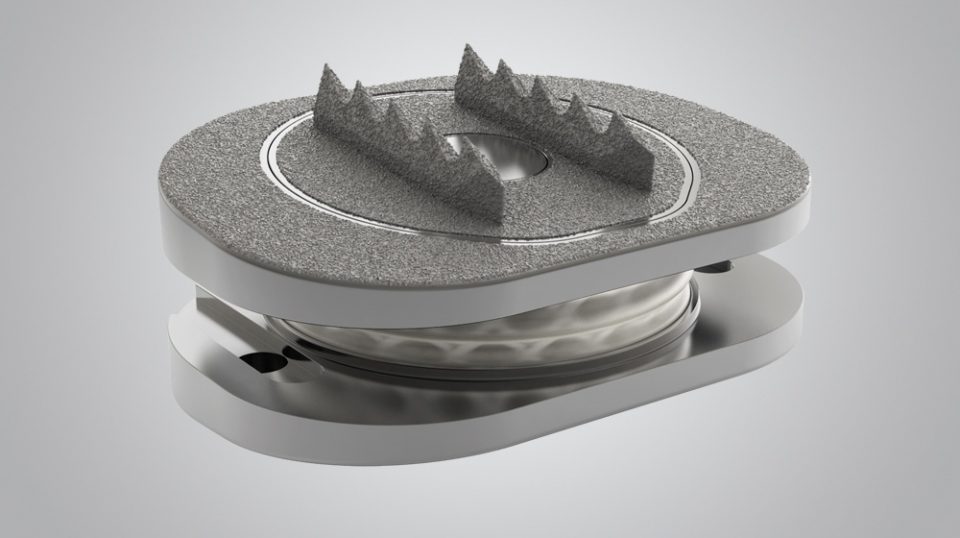Indications
The Spinal Kinetics M6-L Artificial Lumbar Disc System is intended for use in skeletally mature patients undergoing primary surgery for treatment of symptomatic degenerative disc disease (DDD) of the lumbar spine at any one level or two adjacent levels between L3 through S1, who have not responded to at least 6 months of non-operative, conservative management. The DDD patient may also have up to 3mm of spondylolisthesis at the involved level. The disease state is demonstrated by signs and/or symptoms of disc herniation, osteophyte formation, or loss of disc height. 5 EN
Contraindications
The M6-L should not be implanted in patients with the following conditions:
- Be >75 years of age, or < 18 years of age
- Osteopenia or osteoporosis defined as a bone mineral density with T-score ≤-1.5 as determined by spine DXA if male ≥60 years of age or female ≥50 years of age
- Have an active systemic infection or infection at the operative site
- Have sustained an osteoporotic fracture of the spine, hip or wrist
- Have received medications (e.g. methotrexate, alendronate) that interfere with bone and mineral metabolism within 2 weeks of the planned date of the index surgery
- Have a history of endocrine or metabolic disorders (e.g., Paget’s disease) known to affect bone and mineral metabolism
- Have rheumatoid arthritis or other autoimmune disease or a systemic disorder such as HIV or active hepatitis
- Prior intra-abdominal or retroperitoneal surgery that would make the approach prohibitively dangerous
- Prior anterior surgery at the same level
- Spinal metastases
- Have a known allergy to titanium, polyurethane, polyethylene or ethylene oxide residuals.
- Have uncontrolled insulin dependent type 1 or type 2 diabetes
- Require a treatment (e.g., posterior element decompression) that destabilizes the spine.
- Bony lumbar stenosis
- Isolated radicular compression syndromes, especially due to disc herniation
- Pars defect
- Increased segmental instability
- Spinal deformities, spondylolisthesis above 3mm at the involved level(s)
- Radiological confirmation of severe facet joint disease or degeneration

